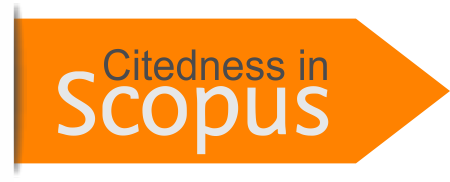Analysis of Short and Long Term Effect on Government Expenditure Realization and Income Disparity Toward Poverty in Aceh Province, Indonesia
Abstract
Implementing the Regional Revenue and Expenditure Budget (APBD) policy and at the same time reducing income disparity is a tangible manifestation and success of local governments to keep poverty level low. This study focuses on the analyzing short-term and long-term effects of variables government expenditure realization and income disparity toward poverty in Aceh Province, Indonesia during 2010-2019 period using Auto Regressive Distributed Lag (ARDL) approach. It is found that both independent variables have no significant effect on short term but have significant effect on long term. Government expenditure realization is found significant at error level 1% while income disparity is found significant at error level 5% toward poverty in long term. Also both government expenditure realization and income disparity is found to have positive effect toward poverty in long term. Based on these findings it is hoped the policy maker will able to formulate a strategic plan to reduce poverty rate in Aceh Province, Indonesia.
Keywords
Full Text:
PDFReferences
Amalia, R., & Rahman Razak, A. (2015). Pengaruh Pengeluaran Pemerintah terhadap Kemiskinan di Provinsi Sulawesi Barat. Jurnal Analisis, 4(2), 183-189.
Cherodian, R., & Thirlwall, A. P. (2015). Regional disparities in per capita income in India: convergence or divergence?. Journal of Post Keynesian Economics, 37(3), 384-407.
Erlina, A. S., & Muda, I. (2017). Antecedents of Budget Quality Empirical Evidence from Provincial Government In Indonesia. International Journal of Economic Research, 14(12), 301-312.
Ginting, A. M. (2016). Pengaruh Ketimpangan Pembangunan Antarwilayah Terhadap Kemiskinan Di Indonesia 2004-2013. Kajian, 20(1), 45-58.
Gujarati, D.N. (2004) Basic Econometrics 4th Edition. New York: McGraw-Hill Companies.
Kurniawan, R., & Managi, S. (2018). Economic growth and sustainable development in Indonesia: an assessment. Bulletin of Indonesian Economic Studies, 54(3), 339-361.
Miranti, R. (2010). Poverty in Indonesia 1984–2002: The impact of growth and changes in inequality. Bulletin of Indonesian Economic Studies, 46(1), 79-97.
Nisa, K., Wulandari, A., & Rahayu, R. L. (2020). Pengaruh ketimpangan pendapatan terhadap kemiskinan di Provinsi Kepulauan Bangka Belitung tahun 2009-2018. SOROT, 15(1), 55-63.
Pusra, C. M., Srinita, S., & Seftarita, C. (2021). Effect of Selected Economic Sectors on Poverty. International Journal of Business, Economics, and Social Development, 2(1), 37-49.
Saputra, A. (2018). Allocation of Education Budget in Indonesia. Budapest International Research and Critics Institute (BIRCI-Journal): Humanities and Social Sciences, 1(2), 141-147.
Saudi, M. H. M., Sinaga, O., Roespinoedji, D., & Razimi, M. S. A. (2019). The role of renewable, non-renewable electricity consumption and carbon emission in development in Indonesia: Evidence from Distributed Lag Tests. International Journal of Energy Economics and Policy, 9(3), 46-54.
Suwardi, A. (2011). Pengeluaran pemerintah daerah, produktivitas pertanian, dan kemiskinan di Indonesia. Jurnal Ekonomi dan Pembangunan Indonesia, 12(1), 39-55.
Wintara, H., Masbar, R., & Suriani, S. (2021). Determinants of socio economic and demographic characteristics of poverty in Aceh Province. International Journal of Business, Economics, and Social Development, 2(2), 50-56.
DOI: https://doi.org/10.46336/ijbesd.v3i2.278
Refbacks
- There are currently no refbacks.
Copyright (c) 2022 International Journal of Business, Economics, and Social Development

This work is licensed under a Creative Commons Attribution 4.0 International License.
Published By:
IJBESD: Jalan Riung Ampuh No. 3, Riung Bandung, Kota Bandung 40295, Jawa Barat, Indonesia
IJBESD Indexed By:
 This work is licensed under a Creative Commons Attribution 4.0 International License.
This work is licensed under a Creative Commons Attribution 4.0 International License.






.png)



